Jim Steranko
| Birth nameJames SterankoBornNovember 5, 1938 | |
| Reading, PennsylvaniaNationalityAmericanArea(s)Illustrator; Writer; PublisherNotable worksNick Fury, Agent of S.H.I.E.L.D. | |
 |
|
| Un eroe dei fumetti, di quando ero ragazzo, che più mi affascinava per la qualità del disegno è stato Nick Fury Agente Dello S.H.I.E.L.D. L’eroe, che appartiene al grande mondo della Marvel Comics, era caratterizzato con uno stile molto diverso dagli altri comics di allora, il disegnatore aveva un tratto molto personale con un forte uso delle chine e dei chiaroscuri e ricco di riferimenti alla pop art. La Collana era ideata e scritta da Stan Lee e disegnate da uno straordinario Jim Steranko. Come per altri disegnatori, dedico anche una meritatissima pagina all’artista americano Jim Steranko (Che una volta a Prato ho anche avuto il piacere di conoscere, e credo di avere un suo disegno autografato, da qualche parte conservato, prima o poi lo farò vedere). |
|
James Steranko (born 5 November 1938, Reading, Pennsylvania, United States) is an American graphic artist, comic book writer–artist–historian, publisher and film productionillustrator. His most famous comic-book work was with the 1960s superspy feature “Nick Fury, Agent of S.H.I.E.L.D.” in Marvel Comics‘ Strange Tales and in the subsequent eponymous series. Steranko earned lasting acclaim for his innovations in sequential art during the Silver Age of comic books, particularly his infusion of surrealism, op art, and graphic design into the medium. His work has been published in many countries and his influence on the field has remained strong since his comics heyday. He was inducted into the Comic Book Hall of Fame in 2006
 |
Biography
Early life and career

Steranko's first published comic-book art: Inset of George Tuska cover, Harvey Comics' Spyman #1 (Sept. 1966)
According to his authorized biography, Jim Steranko’s grandparents emigrated from the Ukraine to settle in the anthracite coal-mining region of eastern Pennsylvania. Steranko’s father, one of nine siblings, began working in the mines at age 10, and as an adult became a tinsmith. Steranko’s early childhood, during the American Great Depression, was spent in a three-room house with a tar-paper roof and outhouse toilet facilities. He slept on a couch in the nominal living room until he was more than 10 years old. Steranko’s father and five uncles showed musical inclination, performing in a band that played on Reading radio in the 1930s, Steranko has said.
Steranko began drawing while very young, opening and flattening envelopes from the mail to use as sketch paper. Despite his father’s denigration of Steranko’s artistic talent and the boy’s ambition to become an architect, Steranko paid for his art supplies by collecting discarded soda bottles for the bottle deposit and bundled old newspapers to sell to scrap-paper dealers. He studied the Sunday comic strip art of Milton Caniff, Alex Raymond, Hal Foster, and Chester Gould, as well as the characters of Walt Disney and Superman, provided in “boxes of comics” brought to him by an uncle. Radio programs, Saturday movie matinées and serials, and other popular culture of the time also influenced him.
He learned stage magic using paraphernalia from his father’s stage magician act, and in his teens spent several summers working with circuses and carnivals, working his way up to sideshow performer as a fire-eater and in acts involving a bed of nails and sleight-of-hand. At s chool, he competed on the gymnastics team, on the rings and parallel bars, and later took up boxing and, under swordmaster Dan Phillips in New York City, fencing. At 17, Steranko and another teenage boy were arrested for a string of burglaries and car thefts in Pennsylvania.
chool, he competed on the gymnastics team, on the rings and parallel bars, and later took up boxing and, under swordmaster Dan Phillips in New York City, fencing. At 17, Steranko and another teenage boy were arrested for a string of burglaries and car thefts in Pennsylvania.
Up through his early 20s, Steranko performed as an illusionist, escape artist, close-up magician in nightclubs, and musician, having played in drum and bugle corps in his teens before forming his own bands during the early days of rock and roll. Steranko, whose first band, in 1956, was called The Lancers, did not perform under his own name, claiming he used pseudonyms to help protect himself from enemies He also claims to have put the first go-go girls onstage. The seminal rock and roll group Bill Haley and his Comets was based in nearby Philadelphia, Pennsylvania, and Steranko, who played a Jazzmaster guitar, often performed in the same same local venues, sometimes on the same bill, and became friendly with Haley guitarist Frank Beecher, who became a musical influence.
During the day, Steranko made his living as an artist for a printing company in his hometown of Reading, designing and drawing pamphlets and flyers for local dance clubs and the like. He moved on after five years to join an advertising agency, where he designed ads and drew products ranging from “baby carriages to beer cans”.
Breaking into comics
After first attempting to find work at Marvel Comics in 1965, Steranko instead entered the comics industry with Harvey Comics, landing assignments under editor Joe Simon, who was “trying to create a line of super heroes within a publishing company that had specialized in anthropomorphic animals.”For Simon and Harvey Comics, Steranko created (or helped create) and wrote the characters Spyman, Magicmaster and the Gladiator for the company’s short-lived superhero line, Harvey Thriller. Shortly afterward, he showed his “Secret Agent X” proposal to Paramount Television‘s animation unit in New York City (nothing became of it), and met with Marvel editor Stan Lee. Steranko inked a two-page Jack Kirby sample of typical “Nick Fury” scenes (first published in 1970 by Supergraphics in the extremely limited edition “Steranko Portfolio One” and then again thirty years later in slightly altered form in the 2000 trade-paperback collection Nick Fury, Agent of S.H.I.E.L.D.; see “Collected works”, below), leading to Lee’s assigning him the “Nick Fury” feature in Strange Tales, a “split book” shared each issue with another feature.
Future Marvel editor-in-chief Roy Thomas, then a staff writer, recalled Steranko’s arrival at Marvel:
 |
Silver Age Steranko
The 12-page “Fury” strip was initially by Lee and Jack Kirby, with the latter supplying such inventive and enduring gadgets and hardware as the Helicarrier — an airborne aircraft carrierLife Model Decoys) and even automobile airbags. Marvel’s all-purpose terrorist organization HYDRA was introduced here as well.
Steranko, hired as an unknown commodity with “little experience in comics” began his stint on the feature by penciling and inking “finishes” over Kirby layouts in Strange Tales #151 (Dec. 1966), just as fellow new Marvel artist John Buscema had done on the issue prior. Steranko also began drawing the every-other-issue “Nick Fury” cover art two issues later (also initially over Kirby layouts), and, in a rarity for comics artists, took over the series’ writing with #155, after Lee was initially replaced by Roy Thomas. He additionally became the uncredited colorist along the way.
“Nick Fury, Agent of S.H.I.E.L.D.” soon became one of the creative zeniths of the Silver Age, and one of comics’ most groundbreaking, innovative and acclaimed features. Ron Goulart, in his Comix: A History of Comic Books in America, wrote, “[E]ven the dullest of readers could sense that something new was happening. … Which each passing issue Steranko’s efforts became more and more innovative. Entire pages would be devoted to photocollages of drawings [that] ignored panel boundaries and instead worked together on planes of depth. The first pages … became incredible production numbers similar in design to the San Francisco rock concertposter of the period”.
Steranko introduced or popularized in comics such art movements of the day as psychedelia pop art, drawing specifically on the “aesthetic of Dali,” with inspiration from Richard Powers, ultimately synthesizing a style he termed “Zap Art.” He absorbed, adapted and built upon the groundbreaking work of Jack Kirby, both in the use of photomontageStrange Tales #167 (Jan. 1968), Steranko created comics’ first four-page spread, upon which panorama he hyperbolically noted, “to get the full effect, of course, requires a second ish [copy of the issue] placed side-by-side, but we think you’ll find it to be well worth the price to have the wildest action scene ever in the history of comics!” All the while, Steranko spun outlandishly action-filled plots of intrigue, barely sublimated sensuality, and a cool-jazz hi-fi hipness. And he created his own version of Bond girls, pushing what was allowable under the Comics Code at the time.

Steranko’s Bond girl-like Contessa Valentina Allegra di Fontaine, from same issue as above left.
Steranko “combined the figurative dynamism of Jack Kirby with modern design concepts”, wrote Larry Hama. When Steranko took over the series, he recostumed Fury from suits and ties to “a form-fitting bodysuit with numerous zippers and pockets, like a Wally Wood spacesuit revamped by Pierre Cardin. The women were clad in form-fitting black leather a la Emma PeelAvengers TV show. The graphic influences of Peter Max, Op Art and Andy Warhol were embedded into the design of the pages — and the pages were designed as a whole, not just as a series of panels. All this, executed in a crisp, hard-edged style, seething with drama and anatomical tension”.
Fury’s adventures continued in his own series, for which Steranko contributed four much-reprinted 20-page stories: “Who is Scorpio?” (issue #1); “So Shall Ye Reap…Death” (#2), inspired by Shakespeare’s The Tempest; “Dark Moon Rise, Hell Hound Kill” (#3), a Hound of the Baskervilles homage, replete with a Peter Cushing manqué; and the spy-fi sequel “What Ever Happened to Scorpio?” (#5). Yet after deadline pressures forced a fill-in “origin” story by another team in issue #4 (and the aforementioned Comics Code-derived censorship), Steranko produced merely a handful of additional covers, then dropped the book. Decades afterward, however, their images are among comics’ best known, and homages to his art have abounded — from updates of classic covers with different heroes in place of Fury, to recreations of famous pages and layouts. (See “Homages”, below.)
Steranko also had short runs on Captain America (three issues out of four, missing a deadline that required Kirby to draw an issue over a weekend) and X-Men, for which he designed a new cover logo. Steranko also dabbled with a romance story, as well as a horror story — “At the Stroke of Midnight”, published in Tower of Shadows #1 (Sept. 1969) — that precipitated a breakup with Marvel. Though that seven-page story would go on to win a 1969 Alley Award, editor Lee, who had already rejected Steranko’s cover for that issue, clashed with Steranko over panel design, dialog, and the story title, initially “The Lurking Fear at Shadow House”. According to Steranko at a 2006 pane and elsewhere, Lee disliked or did not understand the homage to horror author H. P. Lovecraft, and devised his own title for the story. After much conflict, Steranko either quit or was fired. Lee phoned him about a month later, after the two had cooled down, and Steranko would return as a cover artist for Marvel from 1972-73 and also created a new fan club magazine (FOOM) for Marvel which he produced in its first year.
Steranko gradually withdrew from comics between 1969 and 1974. Projects such as the history of comics and his own publishing efforts took up more and more of his time.
Publisher and  paperback-artist
paperback-artist
Writing, penciling, inking and coloring his own work, Steranko was unable to meet the monthly publication deadlines of the comics business of the time. For these and other reasons, he gravitated away from the rigours of producing full monthly comics in favour of covers and special projects. Never thinking of himself exclusively as a comics artist, he branched into other areas of publishing, including most notably bookcover illustration. Lacking any experience as a painter, his decision to effectively quit comics in 1969 led him to “an artist friend who earned his living as a painter,” from whom Steranko obtained an “hour-long lecture,” and the suggestion that he work in acrylics rather than oils, for the sake of speed.Westerns, two pin-up girls, two gothic horror and one sword-and-sorcery“) and met with Lancer Books‘ art director Howard Winters, to whom he immediately sold his fantasy piece. This led to a career illustrating dozens of paperback covers, popularly including those of Pyramid Books‘ reissues of the 1930s pulp novels of The Shadow.
The artist-historian’s wraparound covers on the two-volume Steranko History of Comics
Steranko also formed his own publishing company, Supergraphics, in 1969, and the following year worked with writer-entrepreneur Byron Preiss on an anti-drug comic book, The Block, distributed to elementary schools nationwide. In 1970 and 1972, Supergraphics published two tabloid-sized volumes entitled The (Steranko) History of Comics, a planned six-volume history of the American comics industry, though no subsequent volumes have appeared. Written by Steranko, with hundreds of black-and-white cover reproductions as well as a complete reprint of one The Spirit story by Will Eisner, it included some of the first and in some cases only interviews with numerous creators from the 1930s and 1940s Golden Age of Comic Books.
Other ideas for Supergraphics work included the proposed Talon the Timeless (which ultimately “ended up in a portfolio published in WIZARD magazine #5″), and a calendar of pinups.
  |
Through Supergraphics he also published the magazine Comixscene (retitled Mediascene and finally Prevue), which began as a folded-tabloid periodical on stiff, non-glossy paper, reporting on the comics field. It evolved in stages into a general-interest, standard format, popular culture magazine, running from 1972 through 1994. In its later years, it was criticized for doing double duty as a catalog for Steranko’s retailing business, particularly its erotica.
Steranko’s association with Marvel did not cease entirely during this period. He produced a small number of covers, including Shanna the She-Devil #1 and #2 (Dec 1972 and Feb 1973), Tex Dawson, Gunslinger#1 (Jan 1973) and Creatures on the Loose #21 and 22 (January and March 1973).
In 1973, Steranko became founding editor of Marvel’s official fan magazine, FOOM, which superseded previous fan clubs (including the Merry Marvel Marching Society). Steranko served as editor and also produced the covers for the magazine’s inaugural four issues before being succeeded editorially by Tony Isabella. (He had previously been associated with similar Marvel endeavours, producing two (of twelve) posters for the company’s earlier in-housefanzine Marvelmania.)
Occasionally ret urning to the full-blown narrative form, Steranko wrote, drew, and produced the illustrated novel Chandler: Red Tide (1976) for Byron Preiss Visual Publications/Pyramid Books. Aside from occasional covers and pinup illustrations, Steranko has rarely worked in comics since. A 1997 attempt to negotiate Steranko’s return to S.H.I.E.L.D. did not bear fruit.
urning to the full-blown narrative form, Steranko wrote, drew, and produced the illustrated novel Chandler: Red Tide (1976) for Byron Preiss Visual Publications/Pyramid Books. Aside from occasional covers and pinup illustrations, Steranko has rarely worked in comics since. A 1997 attempt to negotiate Steranko’s return to S.H.I.E.L.D. did not bear fruit.
Film work
For the movie industry, Steranko has produced a number of posters for various films, and was a conceptual artist on Steven Spielberg‘s Raiders of the Lost Ark (1981), doing production designs for the film and designing the character of Indiana Jones. He also served in a similar capacity as project conceptualist on Francis Ford Coppola‘s Bram Stoker’s Dracula (1992) and wrote the episode “The Ties That Bind” of the DC Comics animated TV series Justice League Unlimited.
He has “amassed an enormous portfolio of more than sixty projects (which he called the “Theater of Concepts”) designed to be seen in multimedia form, drew the comic-book adaptation of the 1981 film Outland, which was serialized in Heavy Metal magazine. The lighthearted spy movie If Looks Could Kill (1991) features Roger Rees as the villain, Augustus Steranko, and director Brad Bird has stated that Steranko’s work was his main comic-book influence on Pixar‘s The Incredibles.[citation needed]
Awards and honors
This list is incomplete; you can help by expanding it.
Awards
Steranko has won awards in fields as varied as magic, comics and graphic design. A partial list includes:
In addition to himself being inducted into the Comic Book Hall of Fame in 2006, Steranko’s series Nick Fury, Agent of S.H.I.E.L.D. was inducted, along with Stan Lee & Jack Kirby’s Fantastic Four, into comic fandom’s Alley Award Hall of Fame in 1969.That same ceremony, Steranko took three 1968 Alley Awards, for Best Pencil Artist, Best Feature Story (“Today Earth Died”, Strange Tales #168; first page depicted above), and Best Cover (Nick Fury, Agent of S.H.I.E.L.D. #6).The following year, he won 1969 Alley Awards for Best Feature Story (“At the Stroke of Midnight”, Tower of Shadows #1) and Best Cover (Captain America #113).1970 Shazam Award: Outstanding Achievement by an Individual: Jim Steranko (for The Steranko History of Comics)The DragonCon‘s Julie Award (2003)
Exhibitions
Steranko’s work has been exhibited internationally in more than 160 shows.[5] Among others, his work has been shown in the following locations:
The Louvre Museum, Paris, France (1967)
The Winnipeg Art Gallery
, Winnipeg, Manitoba, Canada (1978)
The Sydney Opera House, New South Wales, Australia (January, 1986)
|
|
References
Steranko.com
The Drawings of Steranko
DragonCon Jim Steranko biography (date and author n.a.)
Steranko escape artistry illustrations collected by Michael Chabon
Jim Steranko Cover Art (paperback covers)
Betty Pages Magazine #4 (Spring 1989): ‘A Life Long Love Affair With The Pop Culture Pin Up!” by Steven Ringgenberg
POV Online: “The Jack FAQ”
External links
Vanguard Steranko Page
WellredPress: “The Inescapable Truth”, by Adam Messano
“Bill Koenig Remembers: ‘Don’t Yield, Back S.H.I.E.L.D.'”
Jim Steranko interview, Comic Book Resources (Oct. 10, 2001)
Dark Horse News: “Jim Steranko: A Biography”, by J. David Spurlock
Jim Steranko at the Internet Speculative Fiction Database
 Adam West and Jim Steranko |























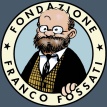

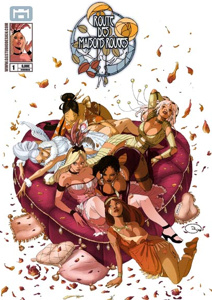




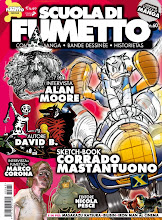









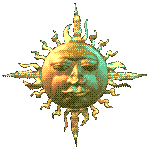



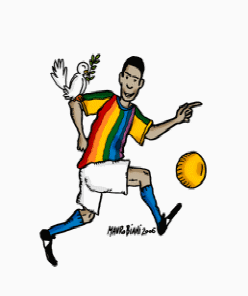






















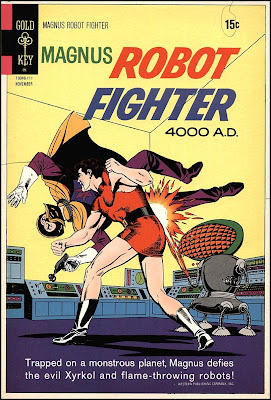















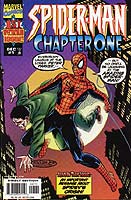













stanotte muoio,una pietra miliare nella storia del fumetto marvel.
Interesting points here Do you allow guest posts? Nicely done, Steven.
i am from Indonesia… really like your comic….
This is my first time go to see at here and i am in fact
pleassant to read all at one place.
I have read so many posts about the blogger lovers but this paragraph is in fact a
good post, keep it up.
Everyone loves it whenever people come together and
share opinions. Great website, stick with it!
Howdy I am so happy I found your blog page, I really found you
by mistake, while I was searching on Digg for something else, Anyways I am here now
and would just like to say kudos for a marvelous post and a all round
exciting blog (I also love the theme/design), I don’t have time to read it
all at the minute but I have saved it and also added your RSS feeds, so when
I have time I will be back to read a lot more, Please do keep up the awesome work.
I like the helpful information you provide in your articles.
I will bookmark your weblog and check again here regularly.
I am quite certain I’ll learn plenty of new stuff right here! Good luck for the next!